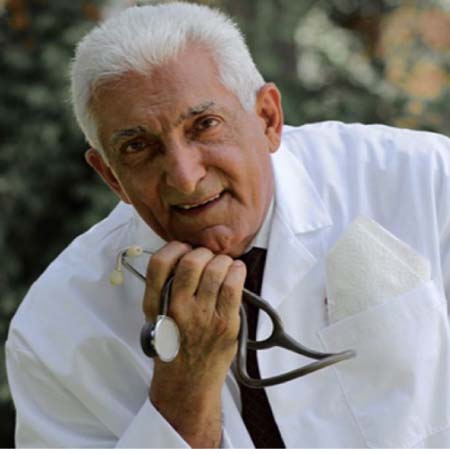
Obesity rates are rapidly increasing in the African Region, as in most parts of the world. Overweight and obesity, particularly in urban settings, are major risk factors for type 2 diabetes, high blood pressure, heart attacks and a variety of cancers.
There is a common misconception that obesity and other no communicable diseases (NCDs) only occur among the wealthy. Poorer populations are experiencing high double-burdens of infectious and chronic diseases. Additionally, sub-Saharan women are far more likely to be obese than men affecting women’s health issues, pregnancy, maternal and infant health.
The greatest risk factors for dying of NCDs are complications with infectious diseases such as HIV, tuberculosis, streptococcus, human papillomavirus, viral hepatitis, rubella and parasitic diseases such as malaria.
If you want to lose weight faster, you’ll need to eat less and exercise more
The key to losing weight is to eat less and move more. That mantra may seem simple, but why is it just so darn hard to make meaningful changes to your diet, and actually see the results? Because you’re doing it wrong, most likely. Adopting a healthy lifestyle requires a lot of hard work, a lot of soul-searching, and a lot of patience. Click through for tips on ways to revamp your diet.
1. Start a Food Diary
Studies have shown time and again that people who keep food diaries are more likely to lose weight. Before you even start to make changes to your diet, start by writing in a food diary for two weeks. Record everything you ate, the number of calories, and other nutritional information like fat, fibber, and more. Studies have shown time and again that people who keep food diaries are more likely to lose weight. Food diaries are a great tool for figuring out what needs to change about
2. Take a Hard Look at your Lifestyle and Food Habits
Look through your food diary. What sorts of lifestyle habits, both good and bad, are contributing to your food choices and preferences? Don’t have enough time in the morning to eat a big breakfast? Ordering takeout at the end of the day because you’re too tired to make dinner? Find simple solutions like, say, waking up a little earlier each morning or doing some prep work over the weekend to prepare for weekday dinners. Often times, lifestyle changes will bring upon diet changes.
3. Start Slowly
Let’s say you want to run a marathon, but can barely make it a block or two without stopping. Does it mean you’ll never be able to go the distance? Nope, it means you haven’t trained enough. The same thing goes for revamping your diet. If you suddenly cut 1,500 calories a day, your body won’t be very happy, and you’ll be more likely to stray from your healthy eating plan.. But you can train yourself to, overtime, incorporate healthy eating plans. Try to swap out, or cut back on, one thing a week. Swap whole grains for white grains. Reach for an apple or a handful of almonds instead of potato chips in the afternoon. Cut the cream and sugar out of your morning coffee. Take a few less bites of ice cream. You get the picture.
4. Consider Not Just What You Eat, But How Much
So much of dieting is about how much we eat, not necessarily about what we eat. Studies have also shown that people tend to underestimate how much they consumed. You can blame restaurants, in large part, for that one — they’ve gotten us accustomed to larger and larger portion sizes over the years.
You can still eat many of the foods you love as long as you monitor your portion sizes. Love chocolate? Try to limit yourself to one small piece a day. Give yourself a little to enjoy with your meal.
You have to know your limits, however. If one bite of ice cream is never going to be enough, and you secretly eat it on it one spoonful at a time over the course of a night until the whole pint is gone (not that I, ahem, have ever done that, or anything!) then perhaps its best to not keep ice cream in the freezer at all.
5. Don’t think about what you’re giving Up; Think about what you’re Gaining
It’s easy to get in the mind-set that dieting is all about what you can’t eat instead of what you can. Don’t think about the white bread or cheese you’ve cut out of your sandwich, think about the healthy greens or other vegetables you’ve added to your sandwich. Make a list of your favourite healthy foods, the kinds of foods that aren’t even a little bit of a chore to eat, and incorporate those into your daily meals.
6. Experiment
Is that list of your favorite healthy foods pretty pathetic? Now’s the time to experiment! Make a point to try one new ingredient, or one new meal, a week. Go to the farmer’s market or grocery store and find a vegetable you’ve never seen before. Don’t just add some steamed broccoli to your usual pasta, but find recipes that incorporate the broccoli and let it shine. If you’ve written off quanta because of one lousy experience, go back and try a different recipe. Start keeping a list of your favourite healthy meals.
7. Have Healthy Snacks on Hand
It’s 3PM and your starving, but the only food around is stuff that comes out of a vending machine. Don’t let this happen ever, ever again! Keep a stash of healthy snacks, like nuts, granola bars and fruits and veggies, close at hand. It’s those
8. Treat Yourself
Don’t skip that stuffing on Thanksgiving. Don’t stick with a fruit salad on your birthday when what you really want is a slice of chocolate cake. Those may be extreme examples of letting yourself “cheat” on your healthy eating every once in a while, but if you let yourself eat the foods you crave every once in a while (perhaps once a month or even once a week) it will be easier to keep from straying the rest of the time.
Or don’t. Everyone is different. Perhaps cheating on your diet isn’t right for you, because you won’t be able to control yourself.
As with all of these tips, it’s best to know your habits, your body and your mind before you commit to them.
Apples as Effective as Drugs to Prevent Heart Attacks
Most of us have heard the adage, “an apple a day keeps the doctor away” throughout our lives, but new research shows that there is serious truth to the message.
The results of the study were published. Scientists found that eating an apple a day or taking stain drugs daily resulted in an equivalent reduction of mortality. The scientists also estimate that if 70% of the 50+ population of the United Kingdom simply ate one apple daily, 8500 deaths every year due to heart attack or stroke would be averted.
Scientists also found that prescribing stating drugs to everyone over the age of fifty, would result in 1200 additional cases of homeopathy, 200 additional cases of rhabdomyolysis, and 12,300 additional cases of diabetes annually. The great news is that if people ate a daily apple instead of taking stain drugs to prevent heart attacks and strokes, there would not be an increase in any of these serious conditions.
The researchers concluded that “An apple a day a day is equally likely to keep the doctor away.” They added “We find that a 150 year old proverb is able to match modern medicine and is likely to have fewer side effects.”
15 DIY Beauty Recipes from Food-Based Ingredients
If you’re looking to avoid toxic beauty ingredients, making your own DIY beauty recipes at home is a natural choice. The recipes below all use simple ingredients, many of which you probably have in your kitchen already.
10 Toxic Beauty Ingredients to Avoid
Store-bought beauty products are so often chock full of harmful chemicals from allergens to carcinogens. Sussing out which ingredients are harmful and which is no big deal can be daunting at best. Just because something has a polysyllabic name doesn’t mean it’s harmful, but when you’re standing in the beauty aisle, you don’t tend to have the tools at hand to make an informed decision.
You can opt out of that whole stressful mess by ditching the per-packaged beauty supplies and making your own!
Feeling a little bit overwhelmed at the thought of making all of your own beauty supplies? Don’t feel like you need to!
Take a look at your medicine cabinet and the list below, and see which product or products you want to try making yourself. It’s OK if you have a lot left over! Don’t panic. Just head over to the Skin Deep Database to see how safe the products you’re using are and find safer alternatives for ones that aren’t so good. You can take control of your beauty routine with a combination of DIY ethic and research.
If you make one thing you’re doing better than you were before. I am of course a big advocate of making things from scratch, but I am also a work-at-home mom to a toddler, so I understand that time is at a premium. My advice is this: Make what you can, and when you can’t make, research.
Let’s do this!
15 Food-Based DIY Beauty Recipes
1. Simple Sugar Scrub – If you skip the essential oils in this body scrub recipe, you actually could eat it by the spoonful. I don’t recommend it, but in theory you could and be totally safe.
2. Two-Ingredient Tomato Scrub – Tomatoes have natural acids that make them great for treating acne-prone skin.
3. Coconut Oil Makeup Remover – Coconut oil has tons of useful beauty applications, so you’ll see it quite a few times on this list.
4. Coconut Oil Hair Mask- See what I mean? This is a once-in-a-while deep conditioning hair mask that works beautifully on dry hair.
5. Tropical Fruit Facial – Get ready for summer with a tropical fruit facial!
6. Dry Shampoo – A dry shampoo helps keep your hair from getting too greasy if it’s been a while between washing.
7. Pumpkin-Brown Sugar Body Scrub – This exfoliating body scrub smells good enough to eat!
Coconut oil is such a versatile DIY beauty ingredient!
8. Coconut Oil Hand Lotion – OK, so this isn’t technically a recipe, because there’s nothing to mix. I got really into this over the cold, dry winter. Just massage a tiny amount of coconut oil onto your dry hands for instant moisture that smells great!
9. Strawberry Foot Scrub – Get this recipe plus 7 other strawberry beauty recipes!
10. Almond Exfoliate – This is great for exfoliating your face and body. This Raw some Life has that recipe plus a handful of other edible beauty recipes.
11. Avocado Lemon Hair Mask – This might sound like the makings of guacamole, but this recipe nourishes your hair instead of your belly.
12. Soothing Deodorant – Herb-infused oils are the superstars in this DIY deodorant recipe. 13. Homemade Toothpaste – Who needs toxic toothpaste full of parables and other nasty chemicals? Try this coconut oil-based homemade alternative instead!
14. Coconut Milk Shampoo – This recipe calls for baby shampoo, but castle soap
15. Rosemary Mint Shaving Cream – Another coconut oil recipe, this time for shaving.
Do you have any favourite food-based DIY beauty recipes or tips? I’d love to share more ideas in the comments!
Your healthiest weight
Everyone needs a goal and positive reasons to achieve that goal. Even losing a few pounds can provide you with cardiovascular benefits, so every step in the right direction is a step toward healthier living. Consider these reasons to work toward maintaining a healthy weight.
When your weight is in a healthy range:
Your body more efficiently circulates blood.
Your fluid levels are more easily managed.
You are less likely to develop diabetes, heart disease, certain cancers and sleep apnea.
Obesity is defined simply as too much body fat. Your body is made up of water, fat, protein, carbohydrate and various vitamins and minerals. If you have too much fat — especially around your waist — you’re at higher risk for health problems, including high blood pressure, high blood cholesterol and diabetes.
Being obese can:
raise blood cholesterol and triglyceride levels.
lower “good” HDL cholesterol. HDL cholesterol is linked with lower heart disease and stroke risk, so low LDL tends to raise the risk.
increase blood pressure.
induce diabetes. In some people, diabetes makes other risk factors much worse. The danger of heart attack is especially high for these people.
Obesity increases the risk for heart disease and stroke. But it harms more than just the heart and blood vessel system. It’s also a major cause of gallstones, osteoarthritis and respiratory problems.
Work with your doctor to lose weight
Every adult should have his or her BMI calculated at least once a year.
For further information e mail to azadehhassanmd10@gmail.com, text only to 002207774467 / 3774469,
Author DR Azadeh Senior Lecturer Physician at the University of the Gambia, Senior Consultant in Obstetrics & Gynaecology, clinical Director Medicare Health Services



